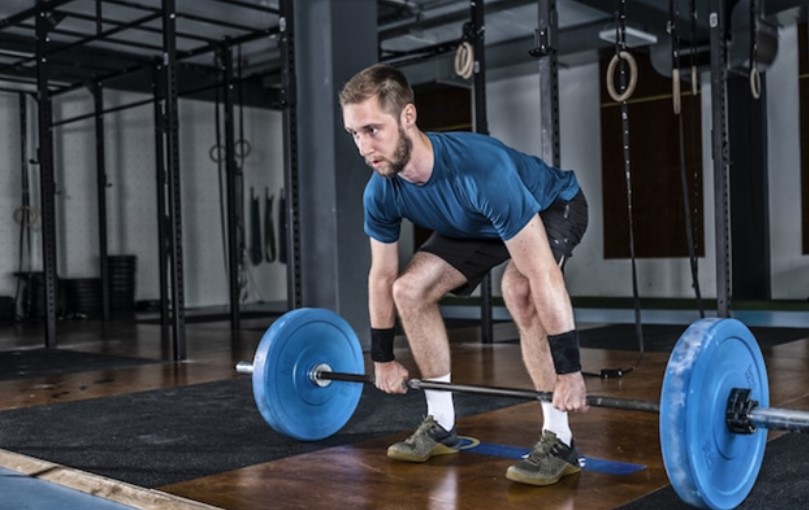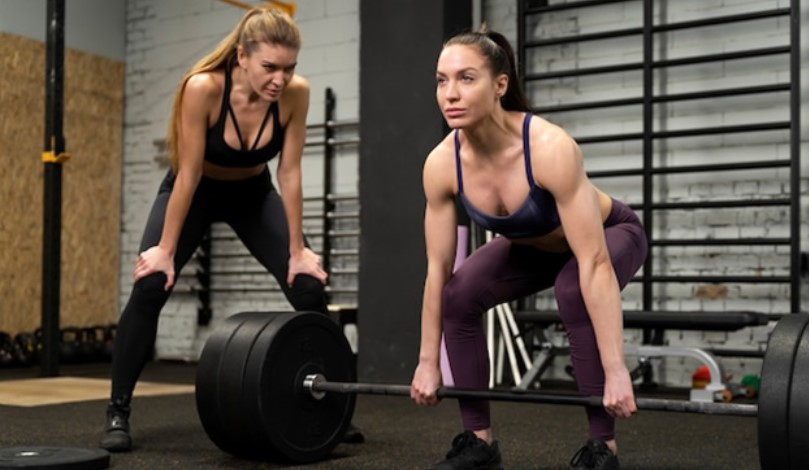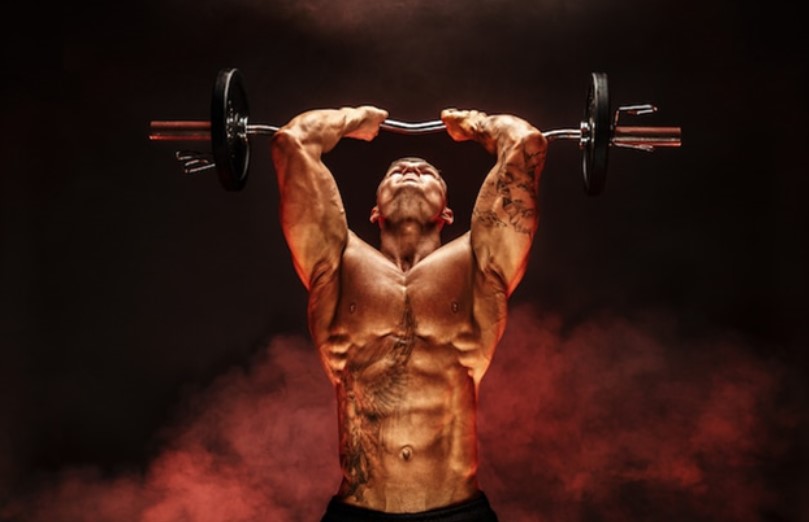Are you looking to get into powerlifting but don’t know where to start? Powerlifting is a sport that involves three main lifts – squat, bench press, and deadlift. It’s a great way to build strength, endurance, and confidence.
And the best part? Anyone can do it!
In this blog post, we will cover everything you need to know about powerlifting for beginners. From understanding what powerlifting is and its benefits to getting started with the right gear, finding a gym, and choosing a lifting program that works for you. We will also talk about how to properly execute the three main lifts with good form, common mistakes to avoid, and how to train effectively for powerlifting.
So let’s get started on building a stronger future today!
What is Powerlifting?
Powerlifting is a strength sport that involves three primary lifts: squat, bench press, and deadlift. Competitors aim to lift the heaviest weight possible for each lift, requiring a combination of strength, technique, and mental fortitude. Powerlifting provides an excellent opportunity for athletes and fitness enthusiasts to build overall strength and muscle mass while challenging themselves both physically and mentally. Proper form and technique are crucial in powerlifting to prevent injury and maximize results, making it essential to seek guidance from experienced trainers or coaches.

The Benefits of Powerlifting
Powerlifting is a strength sport that involves three lifts: the squat, bench press, and deadlift. It is a great way to improve overall strength, muscle mass, and bone density. Powerlifting can also help to improve athletic performance, reduce the risk of injury, and boost self-confidence.
Here are some of the benefits of powerlifting:
Improved strength: Powerlifting is a great way to build strength. The three lifts that are performed in powerlifting work all of the major muscle groups in the body. As you get stronger, you will be able to lift heavier weights, which will lead to even more muscle growth.
Increased muscle mass: Powerlifting is also a great way to increase muscle mass. When you lift heavy weights, your body is forced to adapt by building more muscle. This will help you to look and feel better, and it will also give you more power and endurance.
Improved bone density: Powerlifting can help to improve bone density. As you lift weights, your bones are put under stress. This stress helps to stimulate bone growth and repair. This is important for preventing osteoporosis, a condition that causes bones to become weak and brittle.
Reduced risk of injury: Powerlifting can help to reduce the risk of injury. When you lift weights correctly, you are strengthening your muscles and joints. This can help to protect you from injuries that can occur during everyday activities or sports.
Improved self-confidence: Powerlifting can help to improve self-confidence. As you get stronger and more muscular, you will start to feel more confident in yourself. This can lead to a number of positive changes in your life, including improved social interactions, increased job opportunities, and a better overall outlook on life.
If you are looking for a way to improve your strength, muscle mass, bone density, and overall health, then powerlifting is a great option. It is a challenging but rewarding sport that can help you to achieve your fitness goals.
Getting Started with Powerlifting
Here are some tips for getting started with powerlifting:
- Find a qualified powerlifting coach or trainer: They can help you to learn the proper technique for the three lifts and create a safe and effective training program for you.
- Start with a weight that is challenging but not too heavy: You should be able to lift the weight for 5-8 repetitions with good form.
- Increase the weight gradually over time: As you get stronger, you will be able to lift heavier weights.
- Listen to your body: If you are feeling pain, stop lifting and consult with your coach or trainer.
- Be patient: It takes time to build strength and muscle mass. Don’t get discouraged if you don’t see results immediately.
Powerlifting is a great way to improve your overall health and fitness. With hard work and dedication, you can achieve your powerlifting goals and reap the many benefits of this sport.

The Three Powerlifts
Building strength and endurance is essential for mastering the three main powerlifts: squat, bench press, and deadlift. Each lift targets different muscle groups, making it important to focus on proper form to avoid injury. Progressive overload is also a key component of powerlifting, gradually increasing weight over time to build strength. The beauty of powerlifting lies in its structured training plan with rest days for muscle recovery – leading not only to physical strength but also mental discipline and confidence.
Proper Form for Squat, Bench Press, and Deadlift
Proper form is crucial when it comes to powerlifting. The squat, bench press, and deadlift are complex lifts that require attention to detail in technique to prevent injury. A common mistake is failing to maintain a straight back during the squat or deadlift. Remember to engage your core and keep your back straight throughout the movement. With proper technique and gradual weight increases, you’ll be well on your way to mastering these lifts and reaping the benefits of powerlifting.
Nutrition for Powerlifting
Proper nutrition is a crucial component of successful powerlifting training. Consuming a balanced diet that includes carbohydrates, protein, and healthy fats can provide the energy required for intense workouts.
Protein, in particular, plays a vital role in building and repairing muscle tissue. It is equally important to consume enough calories to support your training goals. Planning your meals and tracking your macronutrient intake can help you stay on track with your nutrition goals.
By prioritizing nutrition, you will set yourself up for success in powerlifting competitions and daily training sessions.

Training for Powerlifting
Powerlifting is a strength sport in which athletes compete to lift the heaviest possible weight in three lifts: the squat, the bench press, and the deadlift. To train for powerlifting, you will need to focus on building strength and power in these three lifts.
Here are some tips for training for powerlifting:
- Start with a beginner program. There are many beginner powerlifting programs available online and in books. These programs will help you learn the correct technique for the three lifts and gradually increase the weight you are lifting.
- Focus on compound exercises. Compound exercises work multiple muscle groups at once, which is more efficient for building strength. Some examples of compound exercises include the squat, bench press, deadlift, and overhead press.
- Lift heavy weights. To improve your powerlifting lifts, you need to lift heavy weights. This means lifting weights that are challenging for you.
- Eat a healthy diet. A healthy diet will help you fuel your workouts and recover from them. Make sure to eat plenty of protein, complex carbohydrates, and healthy fats.
- Get enough sleep. Sleep is essential for muscle growth and recovery. Aim for 7-8 hours of sleep per night.
If you follow these tips, you will be well on your way to becoming a powerlifter.
Here is a sample beginner powerlifting program:
Day 1: Squats and bench press
- Squats: 3 sets of 5 reps
- Bench press: 3 sets of 5 reps
Day 2: Deadlifts
- Deadlifts: 1 set of 5 reps
Repeat this workout 2-3 times per week.
As you get stronger, you can increase the weight you are lifting and the number of sets and reps you do. You can also add more exercises to your program, such as overhead press, rows, and pull-ups.
It is important to listen to your body and take rest days when you need them. Powerlifting is a challenging sport, but it is also very rewarding. With hard work and dedication, you can achieve great things in powerlifting.
Competing in Powerlifting
Participating in powerlifting competitions can provide a sense of community, motivation, and opportunities for personal growth. However, it’s essential to understand the different types of competitions available and their rules. Setting realistic goals and focusing on proper form and technique are crucial to prevent injury and improve performance. Consider working with a coach or experienced powerlifter to help you prepare for competition. Whether you’re a beginner or an experienced lifter, competing in powerlifting can be a rewarding experience that pushes you to achieve your best.
Categories, Classes, and Age Divisions
Powerlifting competitions are organized in categories based on gender and age. Within each category, athletes can compete in different weight classes depending on their size and strength level. Age divisions may also be divided into subcategories such as junior or masters. It is essential to review the competition regulations carefully to ensure that you meet all the eligibility requirements for your desired category. Competing in powerlifting is an excellent way to demonstrate your strength and hard work while being part of a supportive community of fitness enthusiasts.
Let’s Sum Up
Powerlifting is not just a physical activity, but it also helps to improve your mental health and overall well-being. Starting with powerlifting can be daunting, but with the right guidance, anyone can achieve their goals.
Remember to focus on proper form, nutrition, and rest days for optimal results. Powerlifting is also a competitive sport that provides opportunities to test your skills and meet like-minded individuals. Setting realistic goals and celebrating achievements will help you stay motivated throughout your powerlifting journey.
Are you ready to start powerlifting? Share this blog on social media and spread the word!



